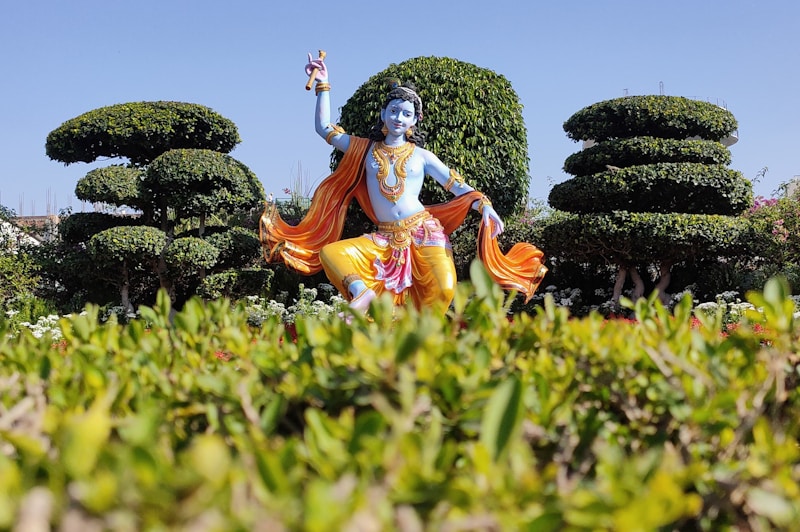10 Questions
Which mountain range is referred to as 'the highest mountain range on Earth'?
Himalayas
Which river is considered sacred in Hinduism due to its purifying powers?
Ganges River
Which desert is also known as the Great Indian Desert?
Thar Desert
Which mountain system influences the monsoon patterns, river systems, and local climates in India?
Himalayas
Which river originates in the western Himalayas and flows through multiple states in India before meeting the Bay of Bengal?
Ganges River
What is the approximate size of the Thar Desert?
80,000 square kilometers
Which desert is known for its semi-arid climate and sand dunes?
Thar Desert
Which region in India is known for being the most extensive rock formation in the world?
Deccan Plateau
Which mountain range serves as a barrier to monsoon winds in India?
Western Ghats
Which river originates in the Deccan Plateau?
Godavari River
Study Notes
India's Diverse Landscape
India's geographical features span a vast and diverse landscape, encompassing towering mountain ranges, expansive rivers, and arid deserts. In this exploration, we'll delve into some of the most significant landmarks that define the Indian subcontinent.
Himalayas
The Himalayas, dubbed as "the highest mountain range on Earth," extend across India, China, and Pakistan. This 2,400-kilometer mountain system includes five of the world's highest peaks, including Mount Everest (8,848 meters), K2 (8,611 meters), and Kangchenjunga (8,586 meters), all located on India's northern border. These gigantic mountains not only define the country's north but also influence the monsoon patterns, river systems, and local climates.
Ganges River
The Ganges, a 2,525-kilometer river, is one of the longest and most revered rivers in India. It originates in the western Himalayas and flows through Uttarakhand, Uttar Pradesh, Bihar, Jharkhand, and West Bengal before meeting the Bay of Bengal. This river supports over 400 million people and is a vital source of water and livelihood for millions of people. In Hinduism, the Ganges is considered sacred due to its purifying powers, and millions of pilgrims undertake grueling journeys to bathe in its waters every year.
Thar Desert
The Thar Desert, also known as the Great Indian Desert, is located in the northwestern region of India, stretching into the neighboring state of Pakistan. It covers approximately 80,000 square kilometers and is the 17th largest desert in the world. The Thar Desert is characterized by its semi-arid climate and sand dunes. It is primarily inhabited by agricultural communities who practice rain-fed farming and pastoral nomads who raise livestock.
Deccan Plateau
The Deccan Plateau, located in south-central India, is the most extensive rock formation in the world, covering an area of over 1.6 million square kilometers. This region is divided into several plateaus, including the Maharashtra plateau, the Andhra Pradesh plateau, the Karnataka plateau, and the Telangana plateau. The Deccan Plateau is predominantly characterized by its flat terrain and its rich soil, which supports numerous agricultural activities. Several rivers, including the Kaveri, Godavari, and Tungabhadra, originate in the Deccan Plateau.
Western Ghats
The Western Ghats, also known as the Sahyadri Mountains, are a mountain range that extends over 1,600 kilometers from the southernmost part of Gujarat to the northern tip of Kerala. This mountain range is famous for its diverse flora and fauna and is considered one of the world's eight "hottest hotspots" for biological diversity. The Western Ghats are home to several endemic species, including the lion-tailed macaque, the Nilgiri tahr, and the Malabar pipit. The mountains also serve as a barrier to the monsoon winds, leading to a more pronounced seasonal climate in the regions to their east.
As India's geographical features demonstrate, the country's landscape is richly diverse and offers a unique combination of towering mountains, vast rivers, and arid deserts. These landmarks not only define the physical character of the Indian subcontinent but also have a profound impact on the country's ecology, culture, and livelihood.
Dive into India's diverse landscape that includes the majestic Himalayas, the sacred Ganges River, the arid Thar Desert, the expansive Deccan Plateau, and the biodiverse Western Ghats. Learn about these iconic landmarks and their significance in shaping India's ecology, culture, and livelihood.
Make Your Own Quizzes and Flashcards
Convert your notes into interactive study material.




